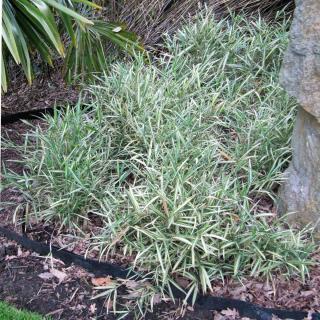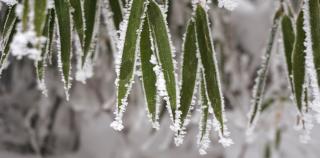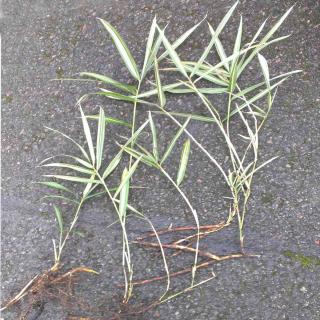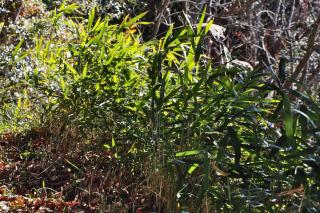

Definitely an outlier in the usually tall bamboo family, dwarf Pleioblastus won’t ever grow taller than 5 feet (1.5 meters).
Pleioblastus key facts
Botanical name – Pleioblastus sp.
Common name – dwarf bamboo, pygmy bamboo
Family – Poaceae
Type – bamboo
Height – from 1 to 4 feet (30 to 120 cm) depending on the species
Planting density – 5 to 10 plants per sq. yard (m²)
Exposure – part sun
Soil – any type, but not too dry
This bamboo compensates for height by growing wide and bushy, turning it into an excellent evergreen high ground cover.
To ready the soil for your dwarf bamboo, add compost, soil mix or manure and mix it in well if ever the soil seems too poor. Use a spade to flip the soil layers over and make sure it’s well mixed and homogenous. This step also helps aerate and loosen up the soil to facilitate root growth.
As is the case for other bamboo species, Pleioblastus can turn very invasive. Setting a rhizome barrier up while still at the planting stage is strongly recommended. Here’s the procedure:
 Dig a trench nearly 2 feet deep (50 cm) around the area where you’re planting your dwarf bamboo plants.
Dig a trench nearly 2 feet deep (50 cm) around the area where you’re planting your dwarf bamboo plants.Smart tip for the environment: since summers get dryer and dryer, plant in fall. Your plants will have more time to spread their roots around, which will help them cope with lack of water, and you won’t have to water as much to keep it alive during that first summer.
You can grow Pleioblastus in a pot. The only precaution if you prefer planting it in a pot is to use containers that are quite large: 4 to 8 gallons minimum (15 to 30 liters). This will give the thick rhizome system enough space to spread. The roots will spread easily in a mix of garden soil and fresh soil mix.
A crucial point is to avoid sitting water: work on the drainage by lining the bottom of the pot with a layer of gravel or pozzolana. This material has a useful characteristic: it absorbs moisture and humidity and releases it to the plant’s roots without drowning them.
In summer, when heat waves strike, water regularly but not too much. Every 3 to 4 years, repot with fresh soil. This step aims to replace the depleted substrate. Increase the size of the pot to give the rhizomes more growing space, too.

Pleioblastus doesn’t need any pruning, except if you want to refresh the clump. To do so, cut it short (but not to the ground) in March, April.
For growing in pots, provide slow-release nitrogen fertilizer at the beginning of spring.

Remember to ensure drainage and eventually root barriers, as when planting it for the first time (see above).
When planted properly, Pleioblastus isn’t a species that’s very vulnerable to diseases or pests. You shouldn’t have any problems at all.
